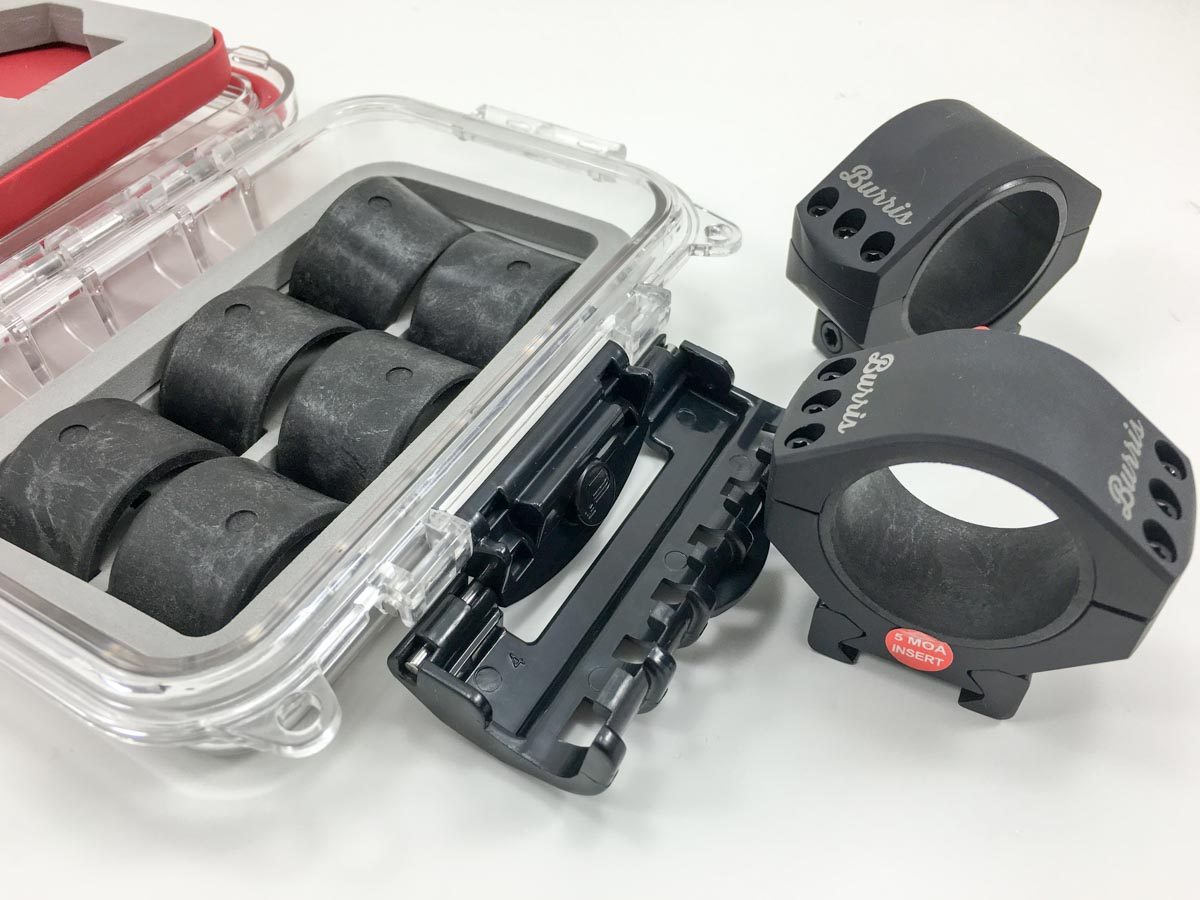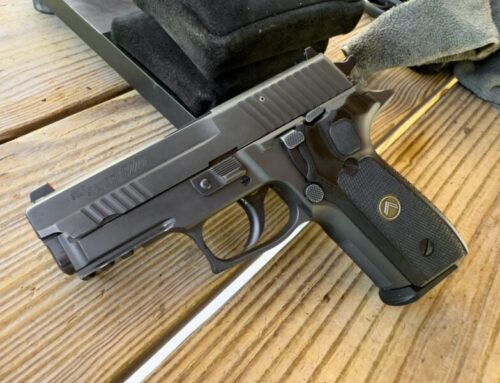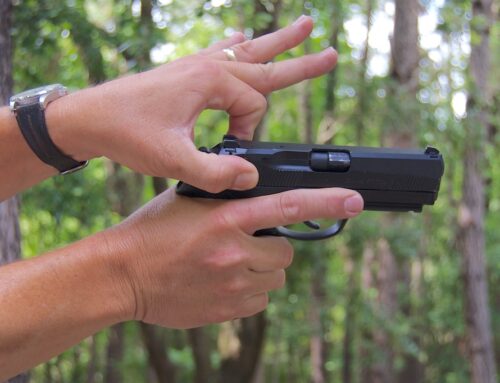
Burris XTR Signature Scope Rings
include elevation adjustment inserts.
You want accuracy and repeatability and you don’t want to overspend on mounts. But, the best optic and rifle combination on the planet will fail with cheap rings and mounts. Cutting corners on mounts is like buying a sports car and putting truck tires on it. It ain’t going to work like it could.
Mounts must achieve the following: They must align perfectly with the bore of the host gun. I’ve tested mounts that look perfectly straight to my naked eyeball, but are out of whack so much that all the adjustment within the scope couldn’t get rounds on target at just 100 yards. Mounts need to maintain that absolute perfect alignment while absorbing the pounding of recoil forces over and over and over again. Imagine trying to stay focused on the bottom line of an eye chart while someone is slapping you silly. Besides that, mounting systems are responsible for placing the optic at the correct height over the gun to allow adequate room for the body of the scope and the (usually) larger objective lens. A mounting system also needs to position the scope longitudinally so correct eye relief is maintained. Eye relief is a fancy word for “correct distance from your eyeball to the scope.” If your eye is too close or too far from the lens, you’ll get a distorted picture, usually in the form of shadow rings in your field of view. In addition to all that, a mounting system needs to be machined with tolerances tight enough to ensure that no undue or uneven pressure is applied to the scope body as it is tightened into position.
So how do you choose the right mount? Let’s take a look at some common mounting methods and where each is appropriate. The subject of optics mounting systems is a bit overwhelming at first because it’s a multi-dimensional problem. There are different ways that mounts attach to the rifle and other different ways that scope rings attach to the mounts. So take a deep breath and hold on to your shorts – we’ll try to keep things as straightforward as possible.
How Stuff Mounts To The Gun
The first thing to consider is how hardware interfaces with the gun itself. There are two basic approaches: bases and rails.
Bases
Some rifles, primarily bolt-action models, have holes drilled in the receiver for the purpose of attaching scope bases. These bases are specific to a model or class of rifles that share the exact same base mounting specifications, meaning the spacing of the holes, mounting screw dimensions, and threading pattern. So, depending on your rifle, you might choose something like the Burris Trumount Universal Scope base. When you look at these, you’ll see a long list of slightly different Trumount bases, each machined to fit a different rifle. For example, if you have a Remington 700 short or long action, there’s a specific Trumount base for that. Different bases provide different methods of attaching the rings. We’ll get to that in a minute.

These Burris Trumount bases
come in different sizes to fit specific rifles.
Rails
Other rifles, like AR-type models, will often come with a rail segment already mounted or machined into the receiver. These are simple, as the rail segment is the “base” to which you directly mount scope rings. Rails aren’t just limited to AR rifles – you’ll find them on all styles like the Volquartsen Custom rifle shown in the photos here.
How Scope Rings Mount To Bases or Rails
Now that there is an interface to the rifle’s receiver, you have to think about attaching the rings that hold the scope. There are three basic approaches to attaching scope rings: integral rings, dovetail mounts, and rail-attached rings. Let’s take a quick look at each.








Leave A Comment